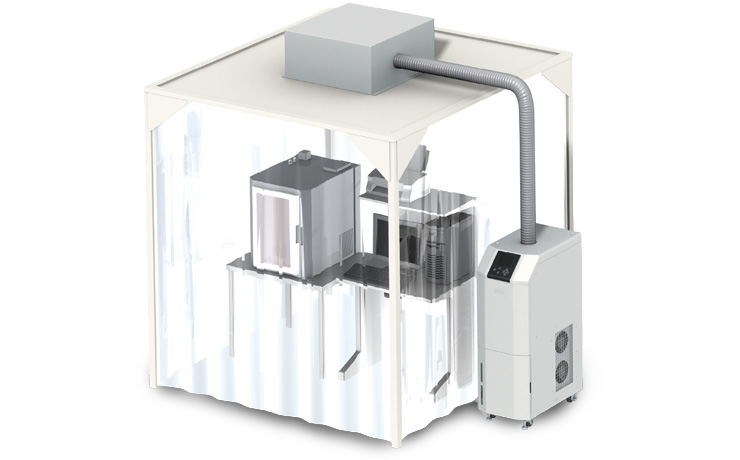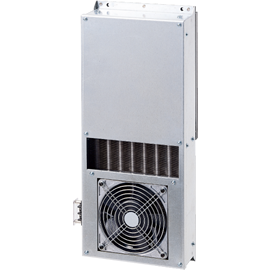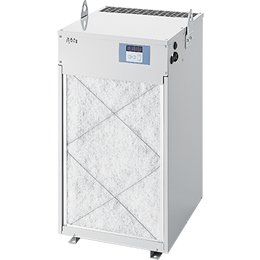Relationship between electrical resistance and temperature

We will use graphs and formulas to clearly explain how electrical resistance changes with temperature.
Table of Contents [display]
Electrical resistance changes with temperature. It has been revealed that there is a large difference in the range of fluctuation between general air conditioning and precision air conditioning.
Electrical resistance changes with temperature
Electrical resistance (R《Ω》) also changes with temperature and can be expressed by the following formula.
R(T)=ρ(T)d/S…⑦
ρ(T) can be approximately expressed by the following formula at around room temperature:
ρ(T)=ρ(T0){1+α(T-T0)}…⑧
This allows us to calculate the change in electrical resistance due to temperature.
*α is the temperature coefficient of resistance, expressed in units of [10-3/℃].
*T0 is resistivity, and its unit is [Ω・m].
The resistivity and temperature relationship for each representative material is shown in the table below.
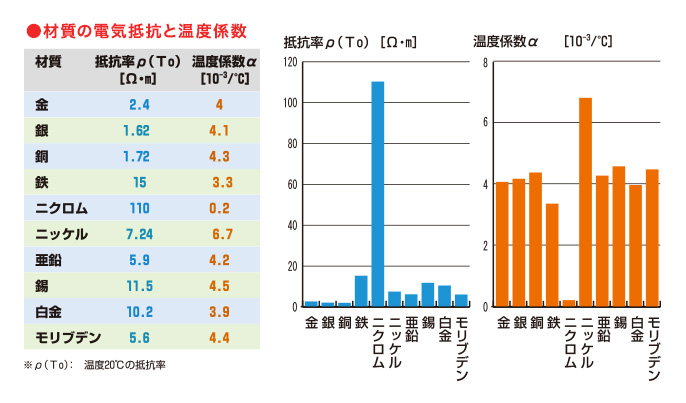
Comparing general air conditioning and precision air conditioning
Under general air conditioning, temperatures are expected to fluctuate between 17 and 28 degrees Celsius throughout the year.
When we simulate and compare the changes in electrical resistance under precision air conditioning controlled to within ±0.1°C, we find that the difference is not to be ignored.
When considered throughout the year, electrical resistance values are much more unstable under general air conditioning than under precision air conditioning.
This will result in a significant drop in the evaluation stability of electrical characteristics.
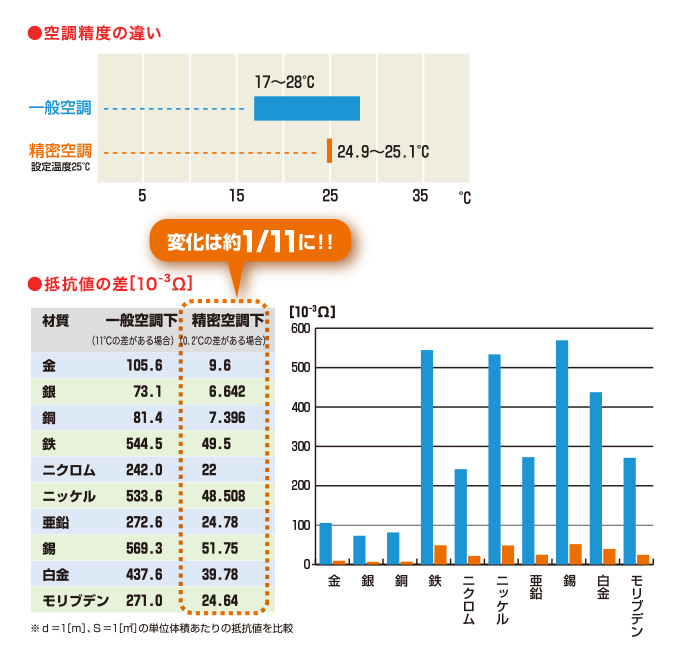
Reliable testing data requires a constant temperature and humidity environment
A stable, constant temperature and humidity environment dramatically improves the reliability of inspection and test data.
- Inline and inside equipment
Want to control temperature and humidity - We would like to introduce a measuring instrument.
Installation temperature conditions cannot be met - Data varies due to temperature drift
